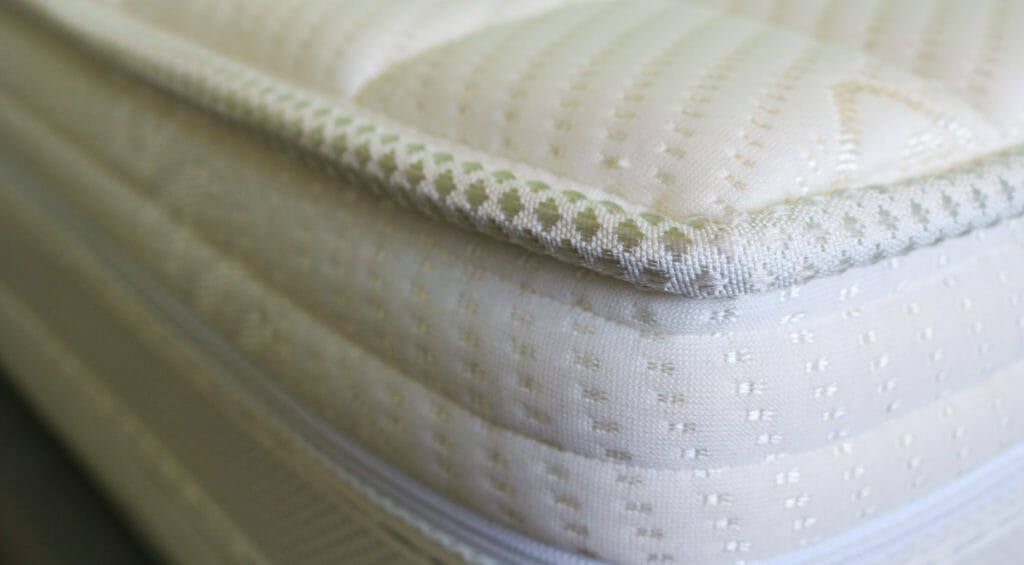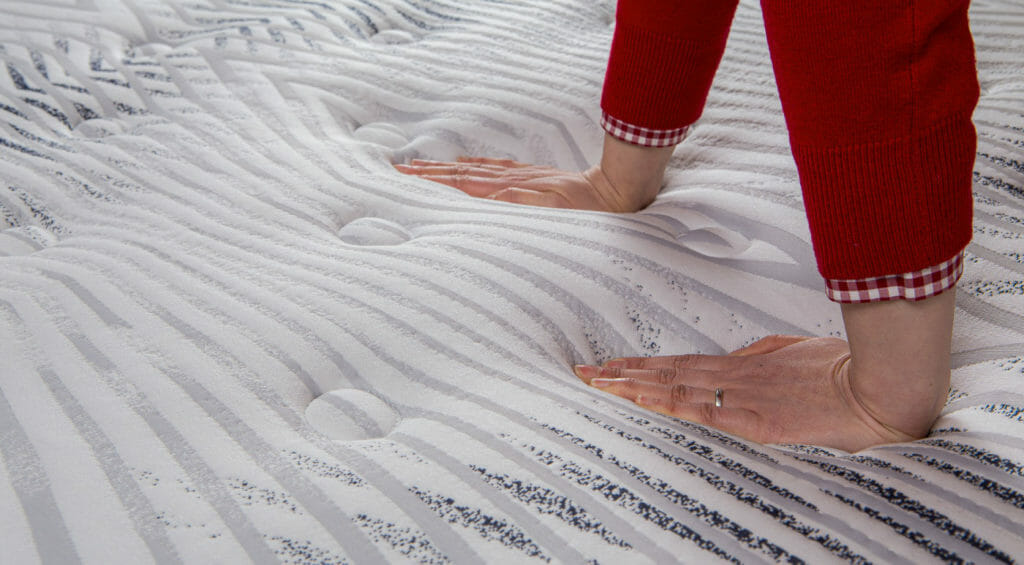
Your mattress plays an important role in helping you sleep better at night. But not all mattresses are created equal, as different materials can make a huge difference in the amount of cushioning and support offered.
If you’re thinking of buying a new bed, the most popular options you’ll need to compare are innerspring vs. memory foam mattresses.
Each of these materials comes with pros and cons you’ll need to consider. In addition, you’ll need to think about your personal needs, sleeping preferences, and budget.
To help you make the right decision, let’s compare innerspring vs. memory foam mattresses head to head.
Innerspring vs. Memory Foam: A Brief Overview

Scientific studies confirm that switching to a mattress that offers the kind of support you need for spinal alignment and comfort can greatly improve your sleep quality. The only problem is the fact that there are so many different types of mattresses — and no mattress is perfect for everyone.
Innerspring and memory foam are the two most popular types of mattresses made today. Some companies even make mattresses that use both of these materials, which are often referred to as hybrid mattresses.
Before we take a look at how they differ, let’s first look closer at each material:
Innerspring Mattress System
The innerspring systems that we see in mattresses were not actually initially designed for beds — originally, they were meant to be used in couches. But after the first innerspring mattress became exceptionally popular around the world, companies too notice and started making more innerspring mattresses.
Innerspring mattresses provide a firm surface to sleep on, and they’re also quite affordable. Even though innerspring mattresses are not as popular as they once were, many companies are still producing them, and many people prefer innerspring beds.
Memory Foam Mattress System
The memory foam mattress is much newer than the innerspring mattress. Memory foam was initially designed by NASA to provide astronauts with more comfortable seating while in space. It was first introduced into mattresses during the 1990s, and memory foam beds quickly became popular.
Today, memory foam mattresses are likely even more popular than the more traditional innerspring mattresses.
Innerspring vs. Memory Foam: How Are They Different?

It’s time to compare innerspring vs. memory foam head to head to see which one might be the best mattress material for you.
Innerspring Mattresses
One of the first things that you need to ask yourself is what type of surface you are looking for. If you’re looking for a mattress that focuses more on support than on cushioning, you probably want to consider an innerspring system.
Three words are often used to describe innerspring mattresses: firm, bouncy, and supportive.
An innerspring mattress consists of a series of springs in the center of the mattress. In most cases, you will find a very thin layer of foam on top of these springs. The springs provide support, while the foam helps to cushion the springs a bit so you don’t feel like you’re sleeping on a hard floor.
Some newer innerspring mattresses feature thicker padding on top, which means you can now find some medium-firm innerspring mattresses in addition to the more traditional firm options.
Innerspring mattresses are usually also better in terms of temperature regulation, since the spring system on the inside provides better airflow. There’s also no sinkage, so it’s a good choice for people who don’t want to feel “stuck” in their mattress.
Spring systems are generally considered to be durable in most cases, depending on the specific material used and the overall manufacturing process. That’s why you may want to consider one of the best innerspring mattresses we’ve reviewed.
Memory Foam Mattresses
A memory foam system is essentially the complete opposite of an innerspring system. That’s why it’s important to compare innerspring vs. memory foam mattresses before you buy your new bed.
Memory foam does not offer the same support as an innerspring system. Instead, it provides comfortable cushioning, as the material was designed to contour around the shape of your body.
Memory foam has no bounce, which means it’s a good option for people who sleep next to a partner who might roll over or get up in the night. It has more of a feature called sinkage, which you might enjoy, especially if you’re a side sleeper. Sinkage means that memory foam cradles you and contours around the curves of your body, which gives you better support at your neck and back.
On the other hand, memory foam is usually quite dense, which means it can retain heat and cause you to feel hotter at night compared to an innerspring system. Some companies are experimenting with new types of memory foam to improve temperature regulation.
If this material sounds like a good fit for you, check out our list of the best memory foam mattresses.
Innerspring vs. Memory Foam: Which Is Best For You?

Each of these sleeping systems has its own set of benefits and drawbacks that you need to consider before buying a new mattress. Think about your sleeping preferences and physical needs, and consider which material is the best fit for you.
For example, if you need more support and hate the feeling of sinking into your mattress, an innerspring mattress may be the best choice. However, if you like a softer bed and don’t want to feel your partner getting up, memory foam might be your best bet.